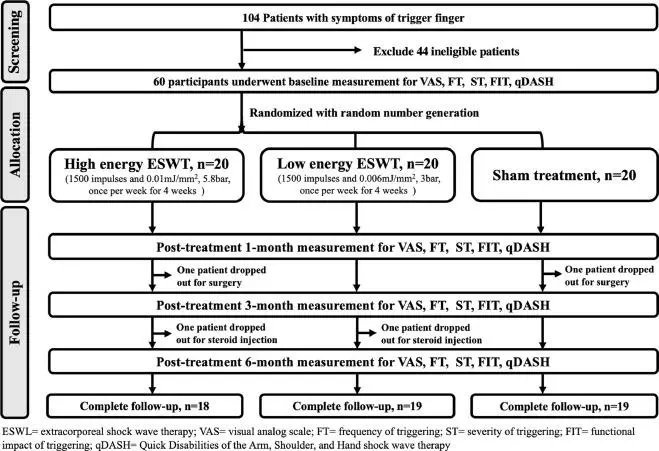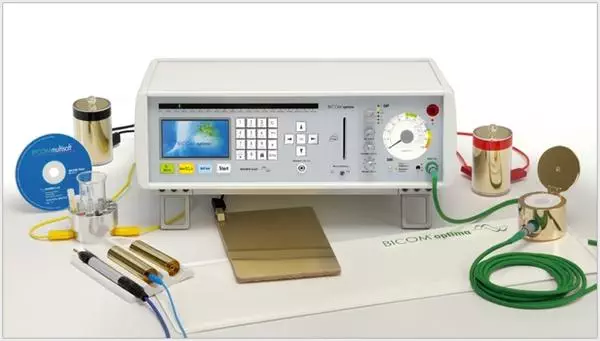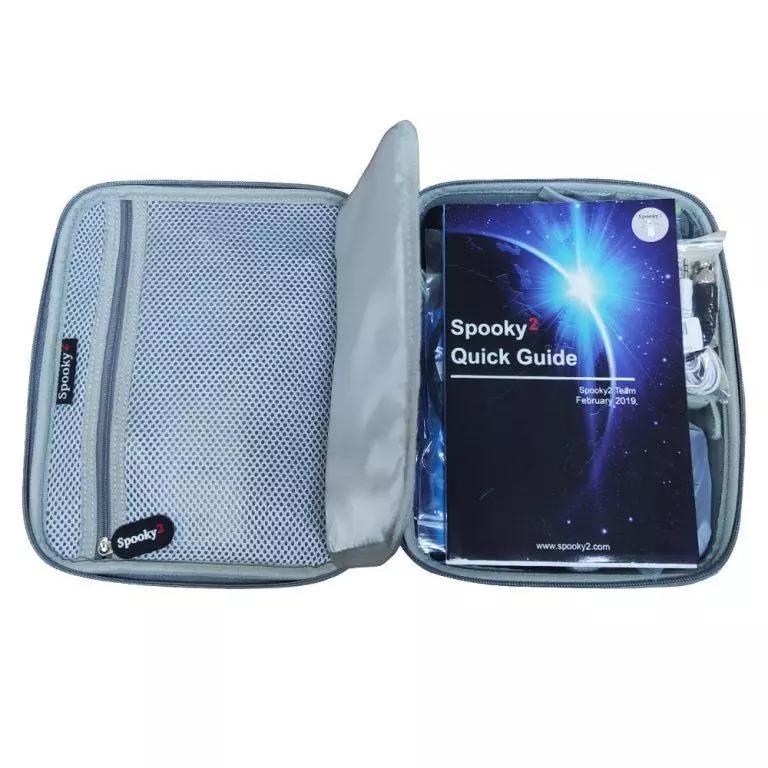Biofeedback Enhances the Efficacy of Low Energy Extracorporeal Shock Wave Therapy

High-intensity shock waves therapy is an effective method for relieving muscle and joint pain and healing musculoskeletal conditions, increasing blood flow and stimulating cell regeneration while speeding up tissue repair.
ESWT treatments can be administered using focused (fESWT) or radial wave machines. Both forms have their own advantages and disadvantages; focused devices tend to deliver higher maximum intensity and penetrate deeper into tissue layers than their radial wave counterparts.
Cost-Effectiveness
Shockwave therapy is an economical and efficient treatment option for various musculoskeletal conditions. It serves as an alternative to surgery, and has been demonstrated to significantly enhance outcomes among those suffering from calcaneus fractures and tendinitis of the shoulder. Shockwaves’ acoustic energy promotes cell growth while increasing protein synthesis which leads to faster healing times – they can even be applied locally or remotely across multiple areas at once!
Shockwave therapy offers patients many advantages, including quick recovery times and returning to work or sports faster than ever before. Furthermore, its costs are minimal, requiring neither facility fees nor anesthesia; plus it increases patient satisfaction while increasing profitability for your practice and creating a positive image for it all around.
Focused extracorporeal shock wave therapy (fESWT) has become an effective physical treatment modality over the last 25 years for treating various musculoskeletal ailments, particularly heel pain and plantar fasciitis. A recent randomized controlled trial compared the results of fESWT with a new-generation pneumatic device to high energy ESWT and surgical management and found that it yielded higher Constant-Murley scores and enhanced osseous union.
Shockwave therapy can also be useful in healing non-healing long bone fractures. Acoustic energy from shockwaves absorbs by the bone and activates mechanosensors that lead to osteogenesis through mechanosensors that can activate mechanosensors for osteogenesis, cell membrane channels activation and collagen production, creating similar effects to that of bone stimulators.
LiSWT studies often lack randomization and sham control cohorts, which would have helped identify optimal dosing and treatment protocols. Blinding both patients and providers would also increase credibility of such studies.
Safety
Low energy extracorporeal shock wave therapy offers many advantages to those undergoing it, including improving blood flow, eliminating scar tissue and increasing cell metabolism and collagen production, helping reduce inflammation, speeding recovery of musculoskeletal injuries as well as speeding recovery time. However, it should be remembered that its effects are mechanical rather than chemical in nature, so other forms of care must also be utilized alongside this form of treatment for optimal results.
Recent research compared ESWT with placebo treatment for chronic plantar fasciitis patients. Researchers concluded that low-energy shock wave therapy was more effective at relieving pain and increasing function than its placebo counterpart; effects also proved more lasting than high-energy therapy; however this small sample size study required further investigations in order to fully determine its efficacy.
Shock waves, also known as orthotripsy, is an extracorporeal form of treatment that uses sonic pulses to address orthopedic ailments. While ultrasound creates images of internal structures of the body, orthotripsy produces shock waves that vibrate soft tissues instead and break up calcium deposits while stimulating healing in order to provide pain relief and comfort relief. Orthotripsy treatment can be carried out safely and noninvasively on any patient without radiation therapy requirements or restrictions.
Shockwaves were recently applied to the spines of rats as part of an experimental spinal cord injury model study. Results demonstrated that low-energy ESWT could increase expressions of brain-derived neurotrophic factor (BDNF) while also protecting against demyelination and improving locomotor and sensory function, suggesting it can serve as a viable therapy treatment option for spinal cord injuries. Accordingly, researchers concluded their research indicates low-energy ESWT can serve as an effective therapeutic remedy.
ESWT treatment often causes reddening, bruising and pain in the treatment area; this usually happens within 24 hours post session. Before beginning ESWT it is essential that a full clinical examination and radiological imaging be conducted.
Efficacy
Low energy extracorporeal shock wave therapy (ESWT) works due to its ability to stimulate cell growth and repair tissue, release various inflammatory substances and neurotrophic factors, and assist with biofeedback use which enables patients to feel and accurately direct ESWT treatment sessions in a doctor’s office. Plus, each session typically lasts less than 10 minutes!
Clinical trials have demonstrated the efficacy of ESWT. Caccio et al conducted a study comparing three applications of low-energy ESWT with surgical management for chronic plantar fasciitis, with significant improvements seen after treatment using low energy ESWT versus surgical management. Results demonstrated significant clinical improvement for low energy ESWT treatments when used alongside surgical management in this group of patients; another research project investigated its effect on recalcitrant plantar fasciitis; here it showed application of low energy ESWT with pneumatic device application improved symptoms while not statistically significant.
Studies have also demonstrated the efficacy of low-energy ESWT for other musculoskeletal conditions, including calcifying tendinopathies of the shoulder and knee, chronic nonhealing osteoarthritis of the knee, and temporomandibular joint dysfunction. According to the International Society for Medical Shockwave Therapy’s guidelines on evaluation before beginning fESWT treatments; physicians alone should administer them.
fESWT is an affordable, safe, and effective therapy option to treat many painful diseases. The therapy may be combined with other forms of treatment – such as acupuncture and massage – or used standalone. Studies have demonstrated how fESWT improves Constant-Murley scores among those suffering from recalcitrant plantar fasciitis and increases heel spur resorption rates; additionally it can be used to treat other pathological conditions, such as chronic nonhealing fractures and pseudoarthroses.
Recent studies have demonstrated that low-energy ESWT can speed wound healing by encouraging vascularization and increasing topical blood perfusion. Furthermore, it increases fibroblasts and osteocytes present at the site of injury while simultaneously increasing brain-derived neurotrophic factor expression in neural cells, decreasing functional impairment from spinal cord contusion injury models.
Biofeedback
Biofeedback, the practice of teaching people how to monitor physiological functions such as heart rate and skin conductance and train them how to control these functions, is one way of increasing the effectiveness of low energy extracorporeal shock wave therapy. Biofeedback’s holistic approach can help patients overcome pain with mental and physical exercises; its ultimate aim being individualized care techniques tailored specifically for each patient.
Massage therapy can be an effective solution to many medical problems, including arthritis, chronic back pain and plantar fasciitis. Furthermore, it has proven successful at treating diabetic foot wounds and non-healing ulcers; indeed it forms an integral component of treating diabetes that includes vascular disease management and nutritional counselling. Massage can reduce hospital admissions while simultaneously decreasing time spent in bed thus decreasing healthcare costs while improving quality of life by decreasing assistive device needs.
Biofeedback sessions use electrodes attached to your body to monitor physiological functions, and show you their results in real time. They might display tones with variable pitches or visual meters on a computer screen showing lines moving across grids. Your therapist will explain what these sensors are measuring before showing techniques for changing physiological responses such as breathing exercises, relaxation techniques and mind-body practices.
Plantar heel spurs can have lasting consequences for active people. Luckily, extracorporeal shock wave therapy (ESWT) offers a simple yet cost-effective solution: extracorporeal shock wave therapy has no side effects and reduces pain significantly while improving mobility – ideal solutions for anyone suffering from plantar heel spurs.
However, ESWT isn’t a permanent cure for plantar heel spurs and requires multiple sessions before showing any visible results. Therefore, it is crucial that an experienced doctor be chosen as well as inquiring as to whether their device is safe and reliable.





